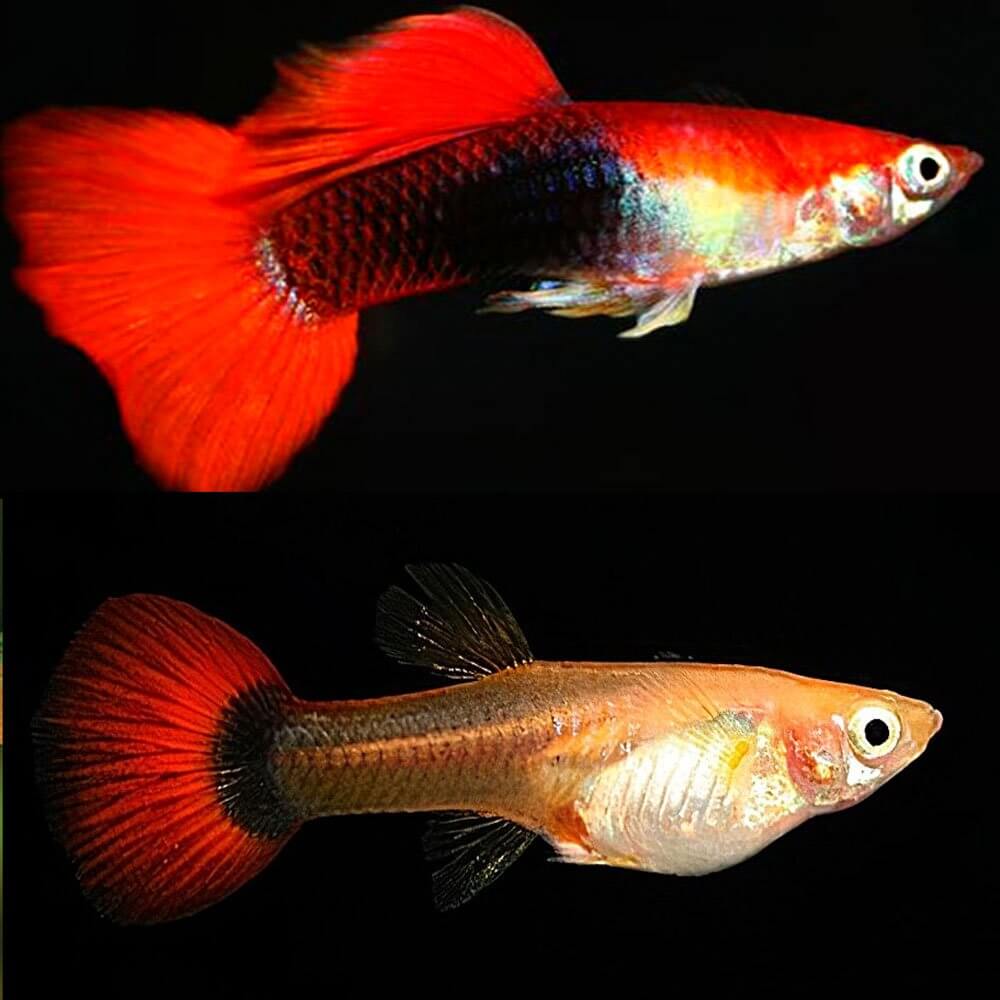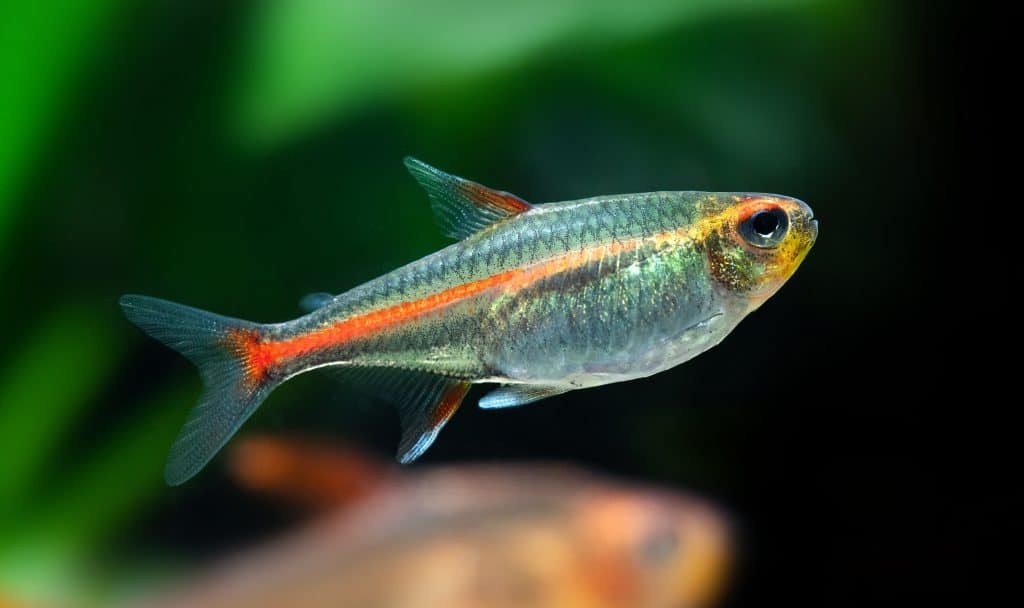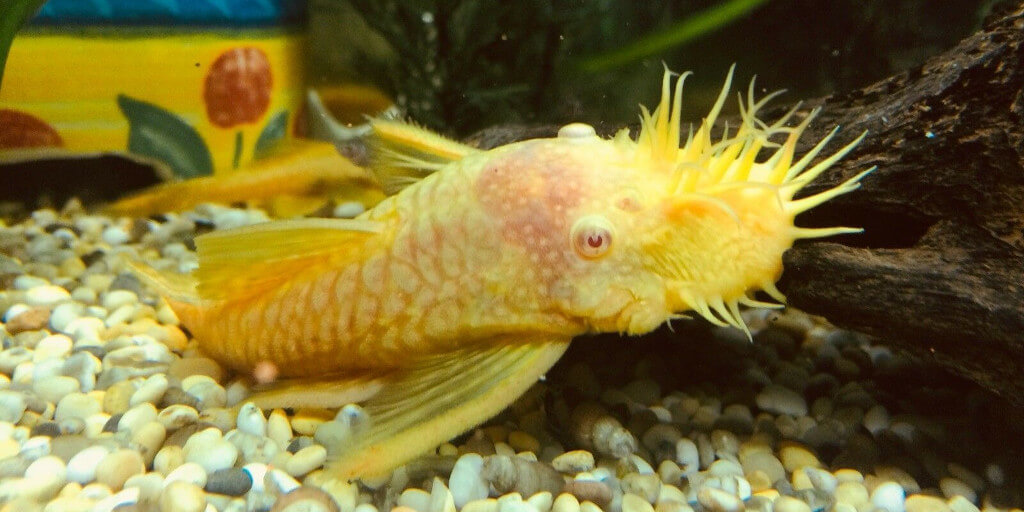Pelvicachromis kribensis, commonly known as Kribensis or Kribs, is a popular freshwater cichlid species native to the rivers and streams of West Africa, particularly Nigeria and Cameroon. These fish are prized by aquarists for their vibrant coloration, manageable size, and relatively peaceful temperament, making them an excellent choice for both beginner and experienced fishkeepers. This article provides a comprehensive overview of the Pelvicachromis kribensis, covering their physical characteristics, natural habitat, aquarium care, breeding, behavior, and more.
Physical Characteristics
Pelvicachromis kribensis are known for their striking appearance, which is characterized by a mix of vivid colors and unique body patterns. Here are some of their key physical features:
- Body Shape: Kribensis have a laterally compressed, elongated body that gives them a streamlined appearance. Their fins are well-developed, with the dorsal fin running along the top of the body and a slightly rounded caudal (tail) fin.
- Coloration: The most distinguishing feature of Kribensis is their vibrant coloration. Males typically display a mix of purple, red, and yellow hues on their bodies, with a distinct black stripe running horizontally from the snout to the tail. The belly is usually a bright red or pink, particularly pronounced during breeding. Females tend to have a rounder body and more vivid coloration on the belly, often appearing even more colorful than the males when they are ready to breed.
- Size: Kribensis are relatively small cichlids, with males reaching up to 4 inches (10 cm) in length and females slightly smaller, around 3 inches (7.5 cm). Their manageable size makes them suitable for smaller aquariums.
- Sexual Dimorphism: Male and female Kribensis can be easily distinguished by their size, fin shapes, and coloration. Males are typically larger, with more elongated dorsal and anal fins, while females have rounder bodies and more intense belly coloration, especially during breeding periods.
Natural Habitat and Distribution
Pelvicachromis kribensis are native to the freshwater rivers, streams, and floodplains of West Africa, particularly in Nigeria and Cameroon. These regions are characterized by slow-moving waters with soft, acidic conditions and dense vegetation.
- Water Parameters: In their natural habitat, Kribensis live in water with a pH ranging from 5.5 to 7.0, temperatures between 75°F and 80°F (24°C to 27°C), and low hardness. The water is typically stained with tannins from decaying plant matter, giving it a slightly brownish color.
- Environment: Kribensis thrive in environments with plenty of hiding spots, such as submerged roots, rocks, and dense plant growth. These natural covers provide protection and breeding sites, essential for their survival in the wild.
Aquarium Setup and Care
To successfully keep Pelvicachromis kribensis in a home aquarium, it’s important to replicate their natural environment as closely as possible. Here’s how to create an ideal setup:
- Tank Size: A minimum tank size of 20 gallons is recommended for a pair of Kribensis. Larger tanks are preferable, especially if you plan to keep them in a community setting with other fish. A 30-gallon tank or larger will provide more space for territories and reduce stress.
- Water Parameters: Kribensis are adaptable to a range of water conditions, but they prefer slightly acidic to neutral water with a pH between 6.0 and 7.5. The water temperature should be kept between 75°F and 80°F (24°C to 27°C). Regular water changes and efficient filtration are crucial to maintain optimal water quality.
- Substrate and Décor: A soft, sandy substrate is ideal for Kribensis, as they enjoy digging and sifting through the sand. Provide plenty of hiding spots using rocks, caves, driftwood, and live plants. Caves are particularly important, as Kribensis often choose them as spawning sites. Floating plants can also help create shaded areas and reduce stress.
- Lighting: Moderate lighting is sufficient for Kribensis. Too much light can cause stress, so it’s best to provide areas of shade with plants or decorations.
Diet and Feeding
Pelvicachromis kribensis are omnivorous and have a varied diet in the wild, consisting of small invertebrates, plant matter, and algae. In captivity, they are not particularly fussy eaters and will accept a wide range of foods.
- Staple Diet: A high-quality cichlid pellet or flake food should form the basis of their diet. These foods are formulated to provide the necessary nutrients for their health and vibrant coloration.
- Supplementary Foods: To replicate their natural diet, supplement with live or frozen foods such as brine shrimp, daphnia, bloodworms, and mosquito larvae. These protein-rich foods are especially important during breeding.
- Vegetable Matter: Kribensis also benefit from the inclusion of vegetable matter in their diet. Blanched spinach, zucchini, or spirulina-based foods can be offered occasionally.
- Feeding Schedule: Feed them small amounts two to three times daily, ensuring that all food is consumed within a few minutes to prevent overfeeding and maintain water quality.
Behavior and Temperament
Kribensis are generally peaceful cichlids, making them suitable for community tanks with other non-aggressive fish. However, they can become territorial, especially during breeding.
- Community Tank Compatibility: Kribensis can coexist with other peaceful species, such as tetras, rasboras, and small catfish. Avoid keeping them with larger, aggressive cichlids or fin-nipping species. When choosing tankmates, it’s important to ensure that there is enough space and hiding spots to reduce territorial disputes.
- Territorial Behavior: During breeding, Kribensis can become quite territorial and will defend their chosen nesting site aggressively. However, outside of breeding, they are generally more tolerant of other fish.
- Activity Level: Kribensis are active and curious fish, often seen exploring their environment and interacting with other tank inhabitants. They are also known for their interesting behaviors, such as digging in the substrate and tending to their fry.
Breeding Pelvicachromis Kribensis
Breeding Pelvicachromis kribensis is relatively straightforward, and they are known for their excellent parental care. Here’s how to encourage breeding:
- Pairing: Kribensis usually form monogamous pairs. It’s best to start with a group of juveniles and allow them to pair off naturally. Once a pair forms, they should be separated into a breeding tank or given a well-decorated community tank with plenty of hiding spots.
- Breeding Tank Setup: A breeding tank should have a soft substrate, caves, and plenty of hiding spots. Maintaining stable water conditions with a slightly acidic pH around 6.5 and a temperature of 78°F to 80°F (26°C to 27°C) will encourage breeding.
- Spawning: The female will lay between 50 to 200 eggs inside a cave or hidden spot. After laying, she will stay with the eggs, fanning them with her fins to ensure proper oxygenation, while the male guards the entrance. The eggs typically hatch within 3 to 5 days.
- Raising Fry: Once the eggs hatch, the fry will remain in the cave under the care of both parents for a few more days until they become free-swimming. The parents will then guide the fry around the tank, protecting them from potential threats. Fry can be fed finely crushed flakes, baby brine shrimp, or specialized fry food.
Health and Lifespan
With proper care, Pelvicachromis kribensis can live for 5 to 8 years in captivity. They are generally hardy fish but can be susceptible to common freshwater diseases if not kept in optimal conditions.
- Common Health Issues: Like many cichlids, Kribensis can be prone to diseases such as Ich (white spot disease) and fin rot if kept in poor water conditions. Regular water changes, a balanced diet, and avoiding overcrowding can help prevent these issues.
- Signs of Good Health: A healthy Kribensis will display vibrant colors, active behavior, and a good appetite. Regular observation is key to catching any potential health problems early.
Conclusion
Pelvicachromis kribensis is a colorful, active, and relatively easy-to-care-for cichlid that offers both beauty and personality in a home aquarium. Their peaceful nature, interesting breeding behavior, and striking appearance make them a popular choice among aquarists of all experience levels. With the right care and attention, Kribensis can provide years of enjoyment and even offer the rewarding experience of raising fry in a home aquarium.




Reviews
There are no reviews yet.